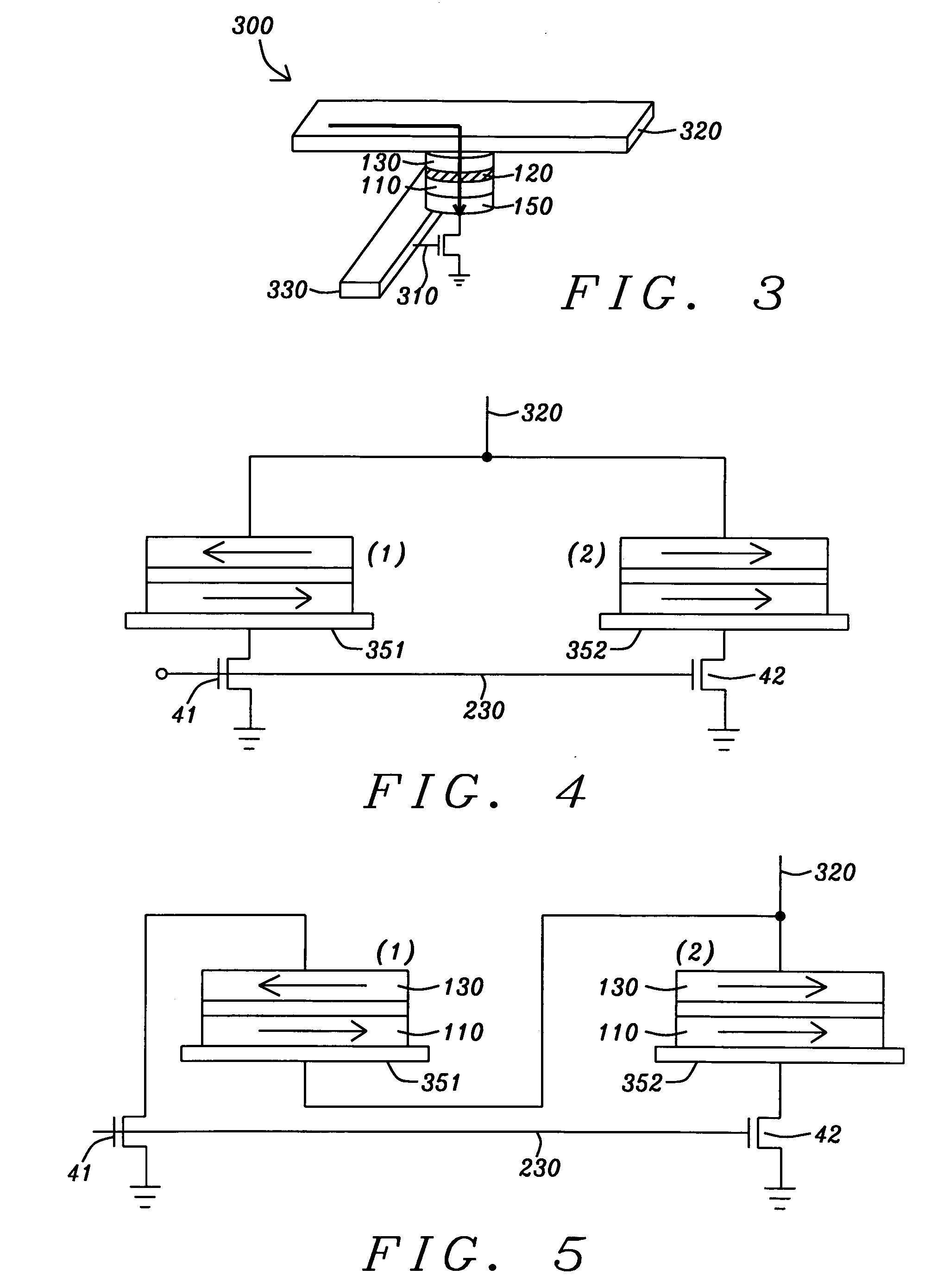Read disturb-free SMT reference cell scheme
a reference cell and scheme technology, applied in the field of smt magnetic random access memory (smtmram) cells, can solve the problems of unwanted cell switching, inability to compare, and increase the power consumption of the circui
- Summary
- Abstract
- Description
- Claims
- Application Information
AI Technical Summary
Benefits of technology
Problems solved by technology
Method used
Image
Examples
Embodiment Construction
[0035]The preferred embodiment of the present invention is a reference cell configuration that is resistant to changes in magnetization direction as a result of read operations. Referring to FIG. 5, there is shown, schematically, the reference cell configuration. It is formed as an interconnection of two STM MTJ cells, with one cell (2) in a parallel magnetization state of minimum resistance, Rmin, and the other cell (1) in an antiparallel magnetization state of maximum resistance, Rmax. The reference bit line (320) is connected to the free layer of cell (2) but to the fixed layer of cell (1) at (351). When a voltage to word line (230) opens read transistors (41) and (42), electrons flow through cell (2) from the fixed layer towards the free layer, but they flow through cell (1) from the free layer towards the fixed layer. As a result, the electrons flowing through cell (2) are polarized along the direction of the fixed layer, but they exert very little torque on the magnetization o...
PUM
 Login to View More
Login to View More Abstract
Description
Claims
Application Information
 Login to View More
Login to View More - R&D
- Intellectual Property
- Life Sciences
- Materials
- Tech Scout
- Unparalleled Data Quality
- Higher Quality Content
- 60% Fewer Hallucinations
Browse by: Latest US Patents, China's latest patents, Technical Efficacy Thesaurus, Application Domain, Technology Topic, Popular Technical Reports.
© 2025 PatSnap. All rights reserved.Legal|Privacy policy|Modern Slavery Act Transparency Statement|Sitemap|About US| Contact US: help@patsnap.com



